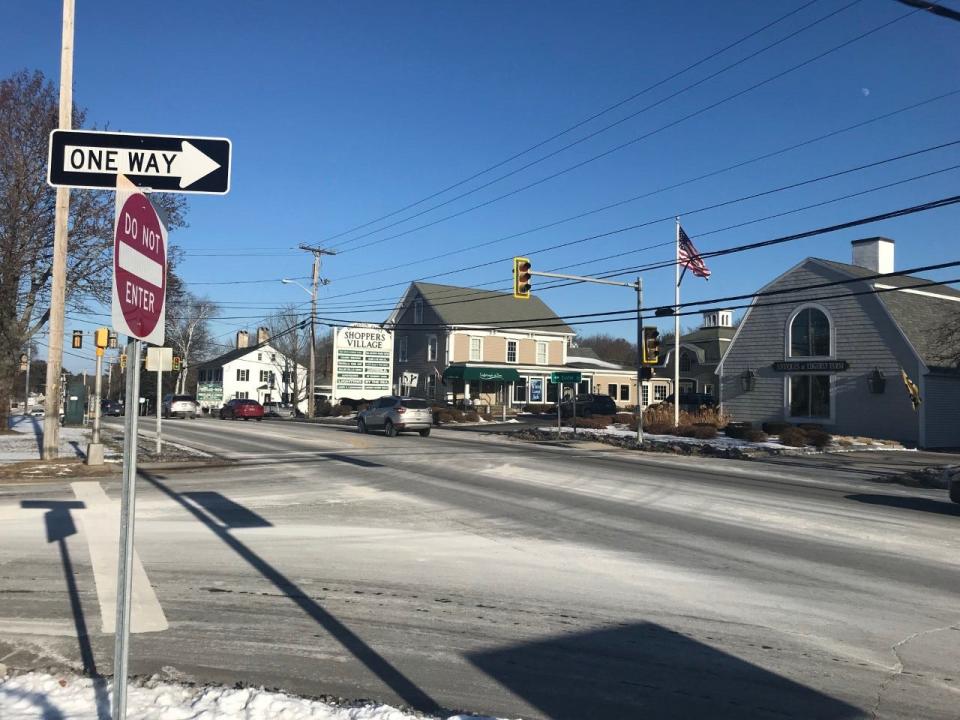Hampton Falls eyes sewer treatment plant to boost development on Route 1. There's a roadblock for now.
HAMPTON FALLS — Local officials are researching the possibility of the town constructing its own sewer treatment facility because discussions about Hampton Falls hooking up to Seabrook’s wastewater treatment plant have stalled.
“(Seabrook) didn’t say no, they just said not at this time,” said Hampton Falls Town Administrator Karen Anderson.
Anderson reached out to Seabrook Town Manager Bill Manzi in September to see if officials were placing a warrant article on Seabrook’s March Town Meeting asking voter approval for allowing Hampton Falls access to Seabrook’s wastewater treatment facility.

Manzi never shut the door on the project, she said, but explained a warrant article wasn’t planned for this year.
“We didn’t say no. We said not right now,” Manzi confirmed. “We told Hampton Falls that we are examining the engineering involved, as well as other issues like pricing, the cost of entry, etc.”
Major development: Hampton rejects casino, hotel for I-95 liquor store property
Manzi said Seabrook is currently dealing with a number of large capital projects of its own, which have to take priority at the moment. But if Hampton Falls is still interested, he’s willing to get the needed information as soon as he can make the time.
“I totally understand,” Anderson said. “We all have a lot on our plates right now.”
In addition, Hampton Falls needs to do some work of its own before proceeding, such as figuring out the cost of such a project and how to finance it without placing a burden on all the town’s taxpayers.
Sewer would spur development on Route 1
Planning Board Chairman Todd Santora pitched the idea to investigate installing public sewer facilities for the properties along Route 1 a couple of years ago.
Santora said sewer access would encourage development along the business corridor that could reduce property taxes for all Hampton Falls property owners. His goal for financing was for the costs involved not to be borne by all taxpayers but only by those whose properties would economically benefit from sewer.
“That’s still the goal,” Santora said. “I think TIFs should be explored.”
More: Seabrook Route 1 widening project hits $1.2 million roadblock
In New Hampshire, a TIF, or Tax Increment Financing, is an economic development tool municipalities can use to finance public improvement projects, new construction, infrastructure or renovations in a specified area. Once the TIF district is delineated, new tax revenues generated from within the district due to the capital improvements are used to underwrite the cost of the project, such as paying off construction bonds.
According to Santora, there are at least 125 taxable residential and commercial properties along the town’s Route 1 corridor. Those properties could become part of or all of a TIF district, if the town decides to create one for the purpose of implementing a sewer system along the route.
Selectman Ed Beattie requested Anderson investigate other small towns that have their own sewer system, to see how they did it.
According to Anderson, she’s found two communities who’ve done so in this part of the state: Newington and Newfields. But these two locations aren’t exact matches to Hampton Falls, she said.
Although Newington has a small population of only about 1,000 residents, it has a huge commercial district, which includes the Newington and Fox Run Mall, as well as other commerce and industry.
As for Newfields, it has a small population but a large land mass, she said, which doesn’t have as many wetlands areas as Hampton Falls.
“Newfields has had its own sewer system for years,” Anderson said. “In 1980, Newfields built a wastewater collection plant and two pumping stations at the cost of $2.5 million.”
What a $2.5 million sewer project in 1980 extrapolates to in 2022 construction costs is still to be researched, as is the logistics of where to site a sewer plant and pumping stations.
That’s part of the work still to be done in Hampton Falls, as well as establishing a TIF district in accordance with state statute, Anderson said.
This article originally appeared on Portsmouth Herald: Hampton Falls eyes sewer treatment plant to boost Route 1 development
